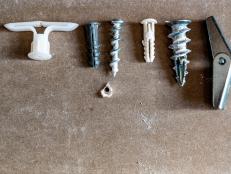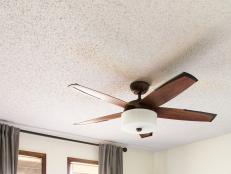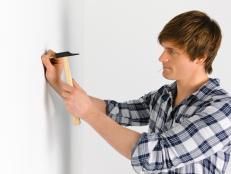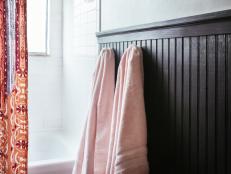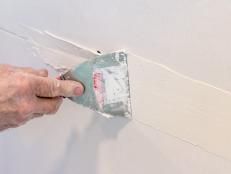How to Install a Drywall Ceiling
Acoustic panels or other ceiling treatments can be replaced easily by a drywall ceiling, giving your room a more streamlined look.
Materials and Tools:
drywall lift
straightedge
ladders
power drill
utility knife
hammer
five-in-one painter's tool
mud masher
scrubber
nail puller
mud tray
drywall knife
carpenter's pencil
gloves
mask
safety glasses
sheets of drywall
drywall mud
drywall tape
drywall screws
Steps:
1. Remove the old ceiling tiles and pull out any old nails. Scrape off any bumps of old adhesive using a utility knife and hammer. Make sure to wear safety goggles.
2. Remove any ceiling-mounted light fixtures. Turn the power off first, and check the fixture with a voltage detector to make sure it's off.
3. Use the straightedge to mark rows on the drywall for the screws. Fit the first piece of drywall in the drywall lift and hoist it into place. Start in the corner and work your way out.
4. Attach the drywall using drywall screws and a power drill. Space the screws about six to eight inches apart. If it's a shiplap ceiling (smooth wood panels), the screws can be attached anywhere. Otherwise, they would have to go into the center of the ceiling joists. Continue until all the drywall is installed.
5. Load up a tray with mud, whip it with the drywall knife until it's nice and soft. Start filling in the screw holes first.
6. Next start on the seams. Place a thick layer of mud on a seam, then center a piece of drywall tape along the seam. Cover the tape with a little more mud and smooth it out with your drywall knife.
7. Wait until the drywall mud is completely dry, then come back and work down rough areas using sponges, scrubbers and drywall knives.
8. The amount of sanding you'll need to do depends on the type of ceiling treatment you're using. You'll need to sand less if you're going to apply a textured treatment.







